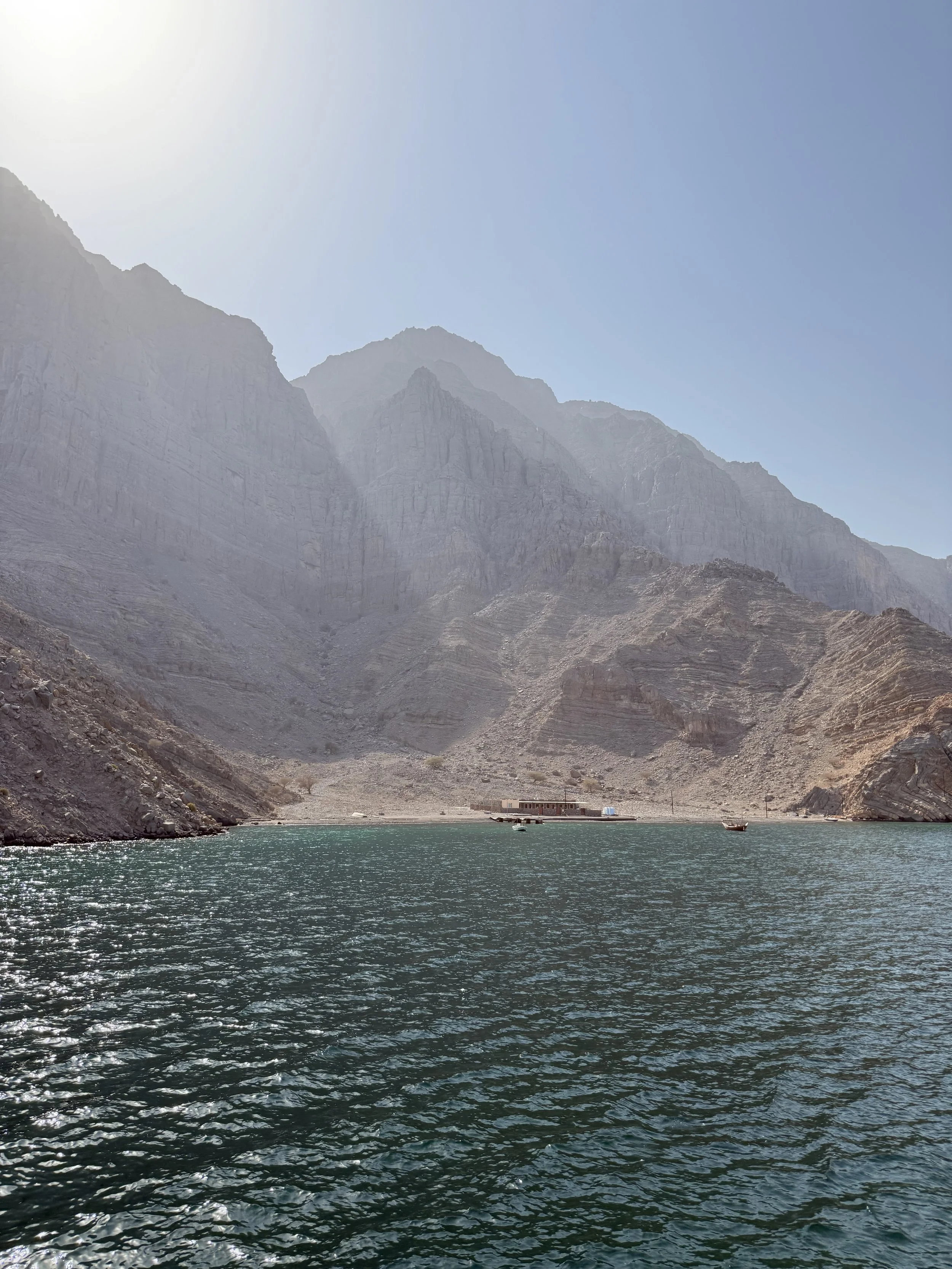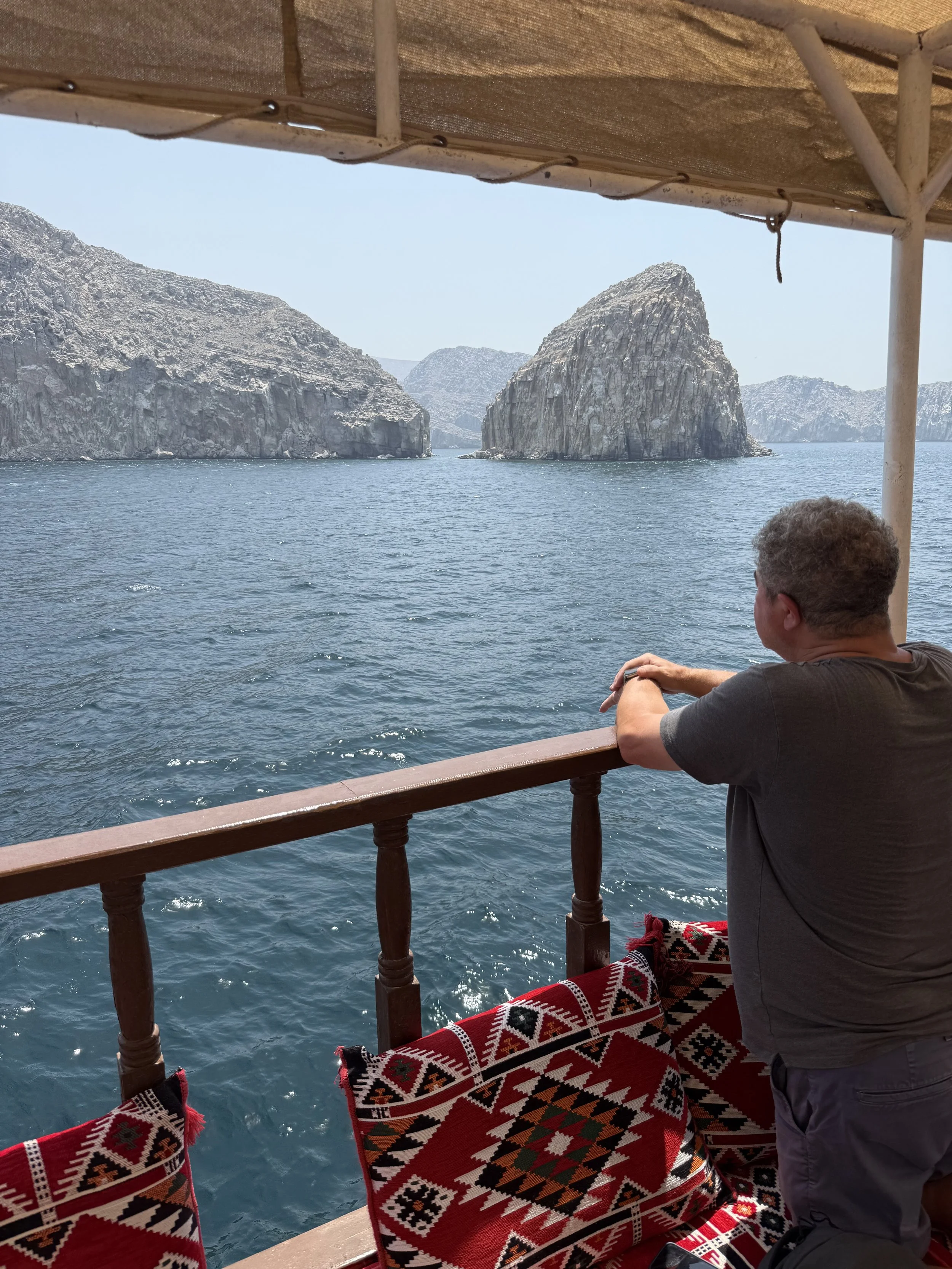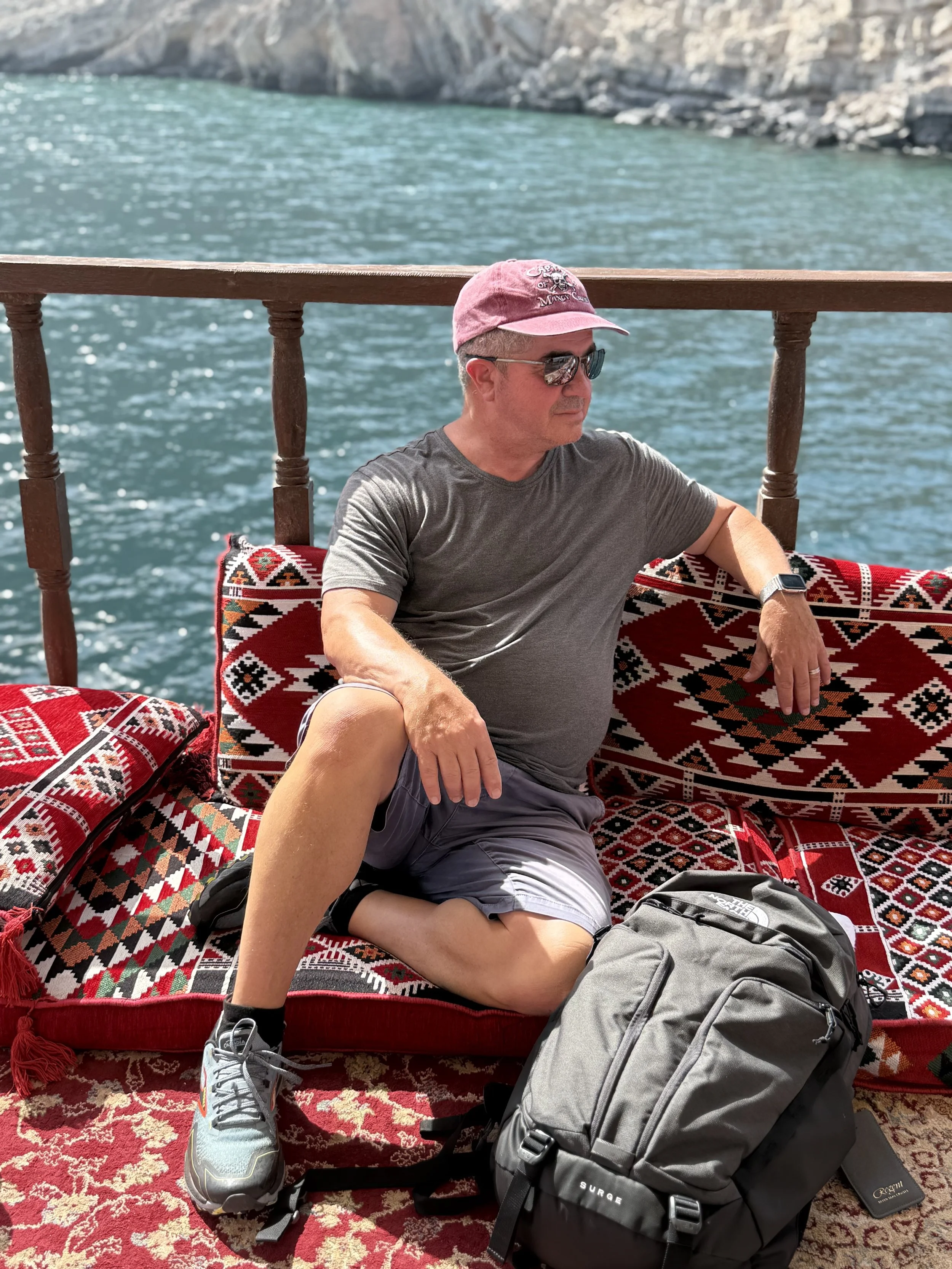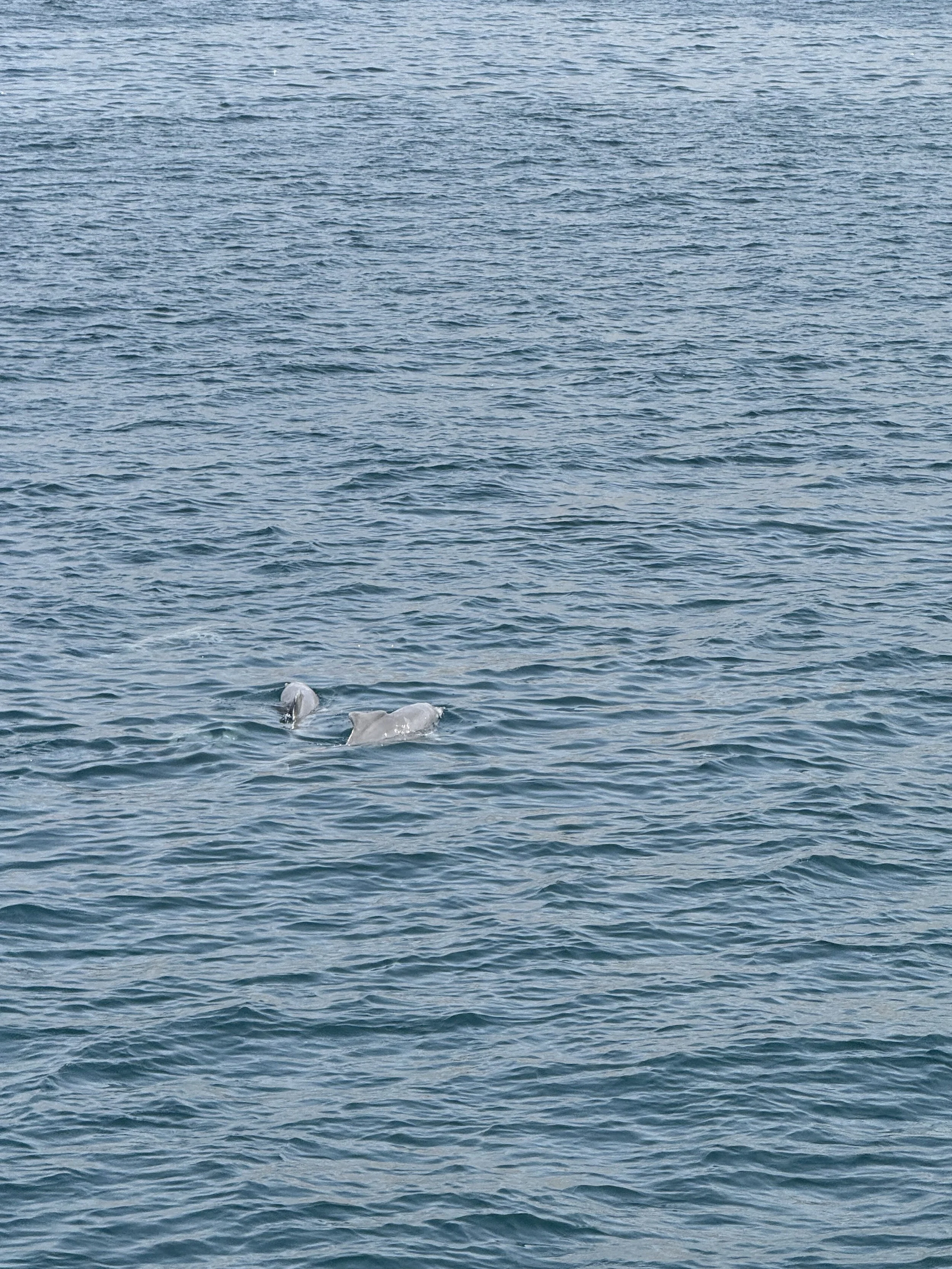Khasab, Oman: Smuggling, Serenity & Surprising Fjords
After the dazzling spectacle of Dubai, our next port of call—Khasab, Oman—felt like stepping into a different world entirely. Tucked into the northernmost tip of Oman’s Musandam Peninsula, Khasab is a tiny port city surrounded by craggy cliffs and shimmering waters. While technically part of Oman, this exclave is separated from the rest of the country by the UAE, giving it a unique, somewhat isolated identity. It’s a place where modern borders and ancient trade routes still intersect—literally.
A Smuggler’s Morning
We started our day with breakfast on the upper deck of the ship, sipping coffee and eating our usual egg white omelettes. At first glance, the port looked peaceful—simple beige buildings, a few scattered piers, and a flurry of white motorboats bobbing in the water. Then we noticed something unusual: a sudden burst of activity as all the small boats pulled out of the harbor at the same time.
Curious, we headed to the railing for a better look—and got an impromptu lesson in regional trade economics. Onshore, we saw workers unloading sheep and goats, herding them into pens. After chatting with a friend and a crew member, we learned what was really going on: daily smuggling runs between Oman and Iran.
Here’s how it works: these small motorboats, often owned by independent traders, make the 65-kilometer journey across the Strait of Hormuz to the southern coast of Iran. They’re loaded with electronics, appliances, and other Western goods—items that are often difficult or expensive to obtain in Iran due to international sanctions. In exchange, they return with livestock like sheep and goats, which are either sold locally or traded again.
The whole process is technically illegal but widely tolerated. The smugglers rely on a network of lookouts—both on land and out at sea—who give the all-clear when the coast is free of authorities. Then the boats launch in coordinated waves, zipping across the water like a choreographed smuggling ballet.
It was surreal to watch this modern-day black market unfold while sipping coffee on a luxury cruise ship. Definitely not the kind of thing you’d see in Dubai.
Dhows & Dolphins in the Omani Fjords
Our tour for the day began with a short walk to another pier, where we boarded a traditional wooden dhow—a vessel with deep historical roots in Arabian maritime trade. These boats were once used by traders and fishermen navigating the waters between East Africa, India, and the Middle East.
Our dhow had two levels: steep stairs led us up to the open-air upper deck, which was laid out with colorful carpets, floor cushions, and backrests lining the sides. Because most of the older passengers stayed below, we had the space almost entirely to ourselves. It felt like our own private lounge as we cruised through what’s often called the “Norway of Arabia”—a nickname earned thanks to the region’s dramatic, fjord-like inlets known as khors.
The Musandam Peninsula’s rocky landscape rose sharply from the water, making us feel like we were drifting through a desert mountain range. Despite the intense heat, the canopy over the deck and ocean breeze kept us relatively cool.
As we glided past jagged cliffs and quiet coves, we spotted dolphins playing in the surf. Eventually, we passed a tiny village built right into the rock face—only accessible by boat. Our guide explained that a few families have lived there for over 500 years, making their living from fishing. The village had basic electricity lines, but it was unclear how they sourced water. It was remote, resilient, and remarkable.
Later, we stopped for a swim break. Some passengers jumped in for a dip while we relaxed upstairs—maybe even snuck in a quick nap. The return cruise retraced our path, and soon we were back at the pier, sun-kissed and a little windblown.
Back to the Heat (and the Ship)
The walk back to the ship was a scorcher—easily the hottest 15 minutes of our trip so far. The sun beat down relentlessly, and the simple landscape seemed to absorb every degree of it.
Khasab’s charm lies in its contrast to Dubai. No glittering skyscrapers or five-star shopping malls here. Instead, this was a town that blended into its surroundings, rooted in tradition and geography. We didn’t explore the town center itself, but from what we saw, Khasab didn’t appear to showcase the same oil wealth or ultra-modern ambitions as its Emirati neighbor.
As our ship pulled away that evening, heading into four and a half glorious sea days (our personal favorites!), we reflected on the stark difference between the two ports. Khasab may not have the sparkle, but it definitely had a story to tell.
Stay tuned—next up: what it’s like to spend nearly five days on the open ocean, and why we secretly love it.








